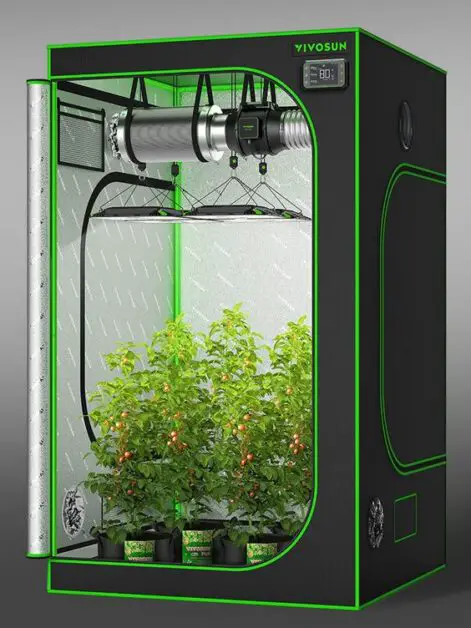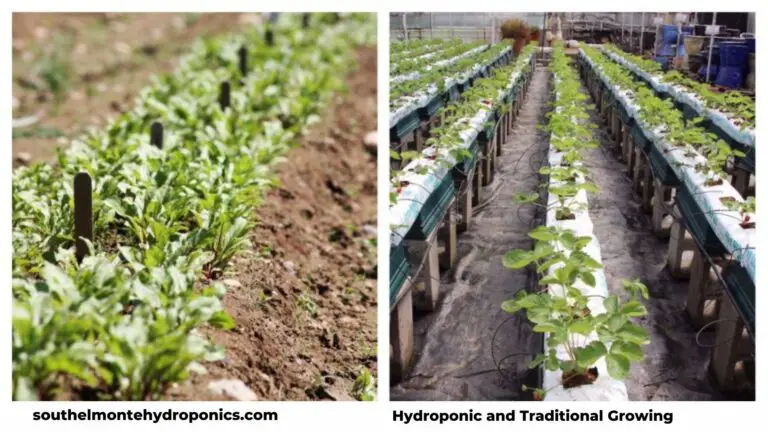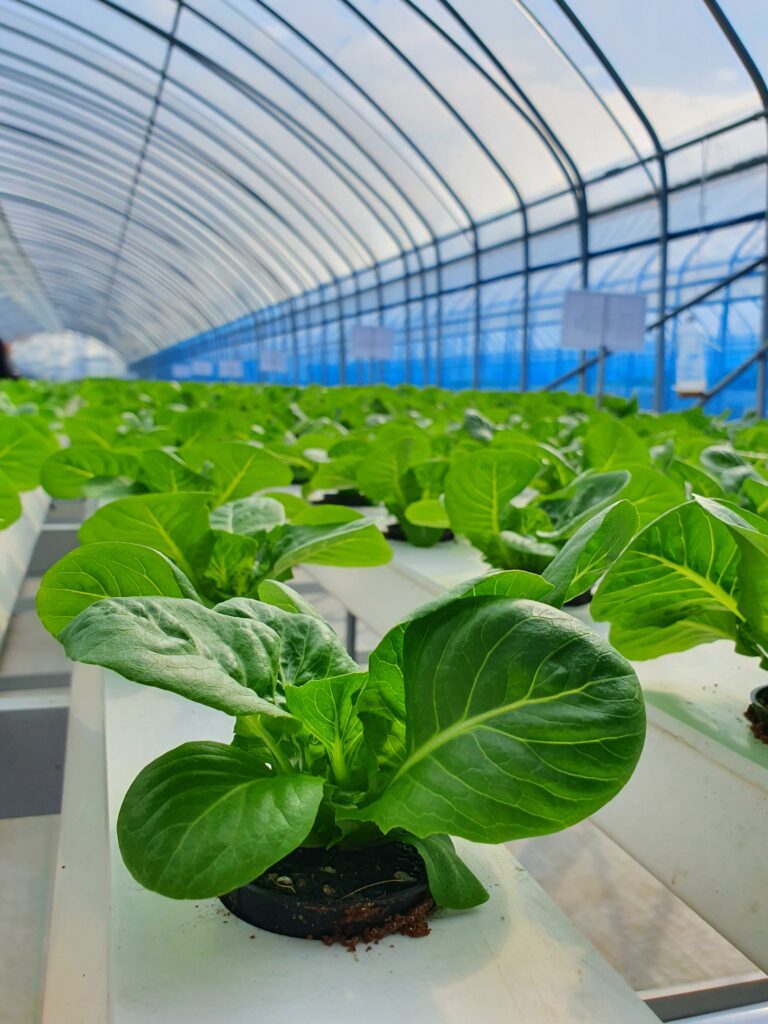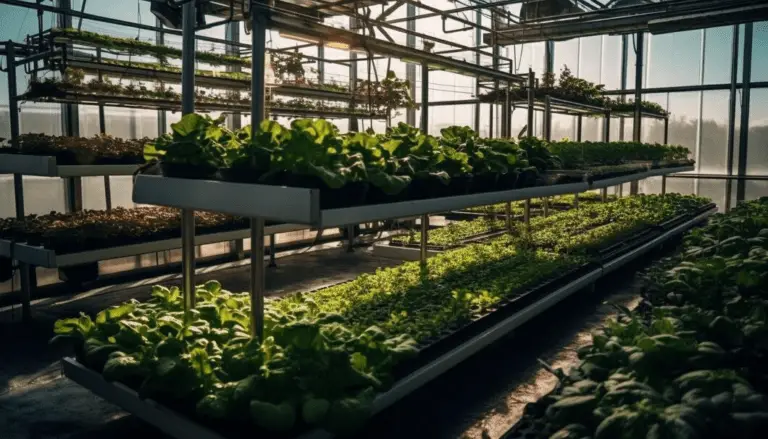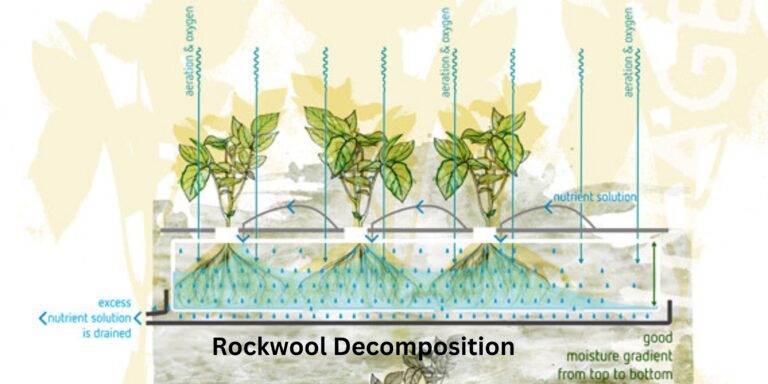Why Hydroponics Farm is Increasing in Popularity and How to Join Trend
Table of Contents: hydroponics farm
The Advantages of Hydroponics Farm:
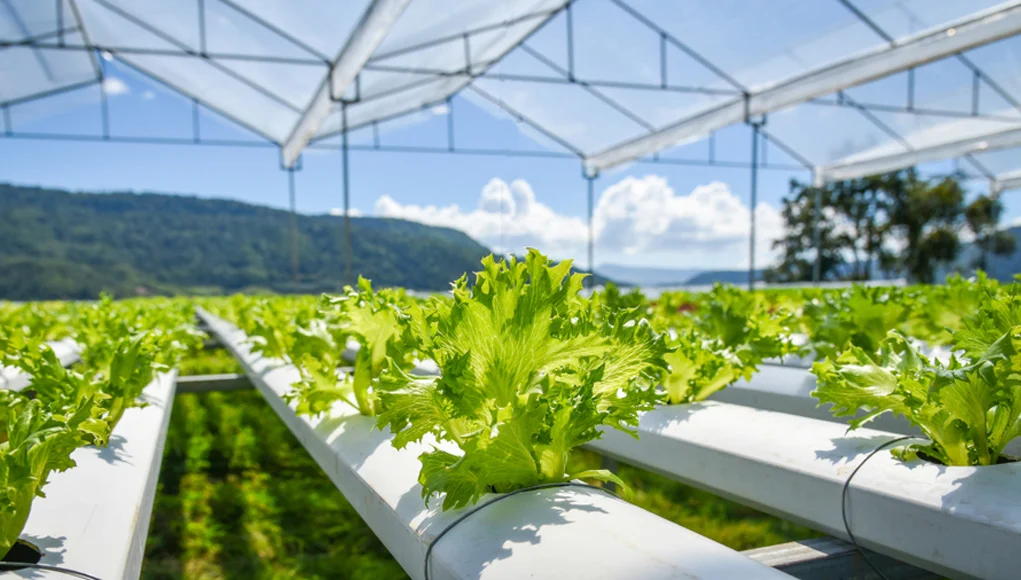
Hydroponics farming has gained significant attention in recent years, and for good reason. This innovative method of growing plants offers several advantages over traditional soil-based agriculture. One major benefit is the ability to maximize crop yield in a limited space. With hydroponics, plants are grown in nutrient-rich water solutions, allowing them to receive a precisely balanced diet tailored to their specific needs. As a result, plants can grow faster and produce higher yields compared to traditional farming methods. In fact, studies have shown that hydroponics can yield up to 20% more than conventional farming in the same area.
Another advantage of hydroponics farming is its ability to conserve water resources. Traditional agriculture relies heavily on water irrigation, which can be a scarce and costly resource. In hydroponics, water is recirculated within the system, greatly reducing water usage compared to soil-based cultivation. Research has demonstrated that hydroponics can use up to 90% less water than conventional farming methods, making it a more sustainable and environmentally friendly option. This water conservation not only benefits the planet but also lowers production costs for farmers in the long run.
• Hydroponics farming allows for maximizing crop yield in a limited space
• Plants receive a precisely balanced diet tailored to their specific needs, leading to faster growth and higher yields
• Studies have shown that hydroponics can yield up to 20% more than conventional farming in the same area
• Hydroponics farming conserves water resources by recirculating water within the system
• Water usage in hydroponics can be up to 90% less compared to traditional agriculture methods
• This makes hydroponics a sustainable and environmentally friendly option
• Water conservation lowers production costs for farmers in the long run
Increasing Demand for Sustainable Agriculture: hydroponics farm
The demand for sustainable agriculture is on the rise, as individuals and communities become more aware of the environmental impact of traditional farming methods. With the increasing need to feed a growing global population while minimizing the strain on limited resources, sustainable agriculture practices, such as hydroponics, are gaining attention and popularity.
Hydroponics, a soilless farming technique, offers numerous advantages that make it an attractive option for those seeking sustainable agricultural practices. One key benefit is the ability to maximize crop yield while using significantly less land compared to traditional farming methods. By utilizing vertical farming structures and stacking plants in layers, hydroponic systems can achieve higher crop densities, allowing for increased productivity in limited spaces. This is particularly valuable in urban areas, where land availability is often scarce.
• Hydroponics allows for maximizing crop yield while using less land compared to traditional farming methods
• Vertical farming structures and stacking plants in layers increase crop densities and productivity in limited spaces
• Particularly valuable in urban areas with limited land availability
Maximizing Crop Yield with Hydroponics
Maximizing crop yield is a top priority for farmers all over the world, and hydroponics has emerged as a powerful solution in achieving this goal. By providing an optimal growing environment, hydroponics allows crops to reach their maximum potential in terms of both quantity and quality.
One of the key factors that contribute to the high yield of hydroponically grown crops is the precise control over nutrient delivery. In traditional soil-based farming, nutrients are often unevenly distributed, leading to inefficient uptake by plants. In hydroponics, however, the nutrient solution is carefully formulated and directly delivered to the roots, ensuring that plants receive the necessary elements in the right proportions. This targeted approach promotes healthier and more vigorous growth, resulting in larger and more bountiful harvests.
Additionally, hydroponic systems allow for the customization and optimization of various environmental factors. From light intensity and duration to temperature and humidity, every aspect of the growing conditions can be fine-tuned to meet the specific needs of different crops. By providing ideal conditions throughout the entire growth cycle, hydroponics maximizes photosynthesis and minimizes stress, enabling plants to divert more energy towards fruit or flower production. As a result, farmers can grow crops faster, produce multiple harvests in a year, and ultimately improve overall crop yield.
In the quest for sustainable and efficient agricultural practices, hydroponics offers a promising solution. By harnessing the power of controlled environments and precise nutrient delivery, farmers can maximize crop yield and ensure a steady supply of fresh, nutritious produce. However, realizing the full potential of hydroponics requires careful planning, proper equipment selection, and an understanding of the unique needs of each crop. For farmers who are willing to invest the time and effort into mastering this innovative approach, the rewards in terms of increased productivity and profitability are well worth it.
• Hydroponics provides an optimal growing environment for crops, allowing them to reach their maximum potential in terms of quantity and quality.
• Precise control over nutrient delivery is a key factor in the high yield of hydroponically grown crops.
• In traditional soil-based farming, nutrients are often unevenly distributed, leading to inefficient uptake by plants.
• In hydroponics, the nutrient solution is carefully formulated and directly delivered to the roots, ensuring that plants receive the necessary elements in the right proportions.
• This targeted approach promotes healthier and more vigorous growth, resulting in larger and more bountiful harvests.
• Hydroponic systems allow for customization and optimization of various environmental factors such as light intensity, duration, temperature, and humidity.
• By providing ideal conditions throughout the entire growth cycle, hydroponics maximizes photosynthesis and minimizes stress on plants.
• This enables plants to divert more energy towards fruit or flower production and ultimately improves overall crop yield.
• Hydroponics offers a promising solution for sustainable and efficient agricultural practices.
• By harnessing controlled environments and precise nutrient delivery techniques,
farmers can maximize crop yield while ensuring a steady supply of fresh produce.
• However, realizing the full potential of hydroponics requires careful planning,
proper equipment selection,and an understanding of each crop’s unique needs.
• For farmers willing to invest time into mastering this innovative approach,
increased productivityand profitability are well worth it.
Overcoming Limited Land Resources: hydroponics farm
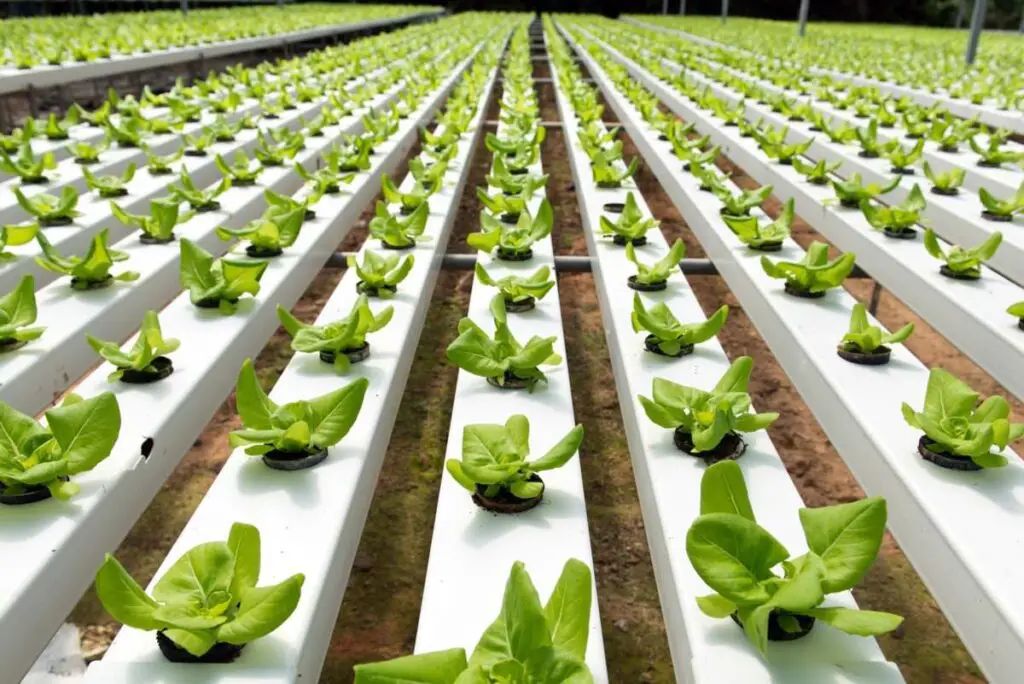
Limited land resources have long been a challenge for traditional agriculture, but hydroponics offers a promising solution. By utilizing vertical space and eliminating the need for soil, hydroponic systems can overcome the constraints of limited land availability. With hydroponics, crops can be grown in stacked layers or vertically, maximizing the use of space and increasing overall productivity.
In addition to the efficient use of land, hydroponics also allows for precise control over the growing environment. By providing plants with the required nutrients directly in their water supply, hydroponic systems eliminate the need for vast expanses of soil. This not only saves space but also reduces the risk of soil erosion and degradation. Moreover, without the need for traditional farming practices, such as tilling and plowing, hydroponics minimizes soil disturbance, contributing to its long-term health and fertility.
Overall, hydroponics presents a viable solution to the challenge of limited land resources in agriculture. By utilizing vertical space and eliminating the dependency on soil, hydroponic systems maximize crop yield while minimizing the environmental impact. As we continue to face the pressure of population growth and urbanization, exploring the potential of hydroponics becomes imperative for sustainable and future-proof farming practices.
• Hydroponics offers a solution to the challenge of limited land resources in agriculture.
• Vertical space is utilized, allowing for crops to be grown in stacked layers or vertically.
• Hydroponic systems eliminate the need for soil, maximizing space and increasing productivity.
• Precise control over the growing environment is achieved through hydroponics.
• Plants receive required nutrients directly in their water supply, eliminating the need for vast expanses of soil.
• Soil erosion and degradation risks are reduced with hydroponic systems.
• Traditional farming practices such as tilling and plowing are not needed, minimizing soil disturbance and contributing to long-term health and fertility.
• Hydroponics presents a viable solution that maximizes crop yield while minimizing environmental impact.
• Exploring the potential of hydroponics becomes imperative for sustainable and future-proof farming practices amidst population growth and urbanization pressures.
Conserving Water through Hydroponics Farm
Hydroponics farming offers a promising solution for conserving water in agriculture, a critical need as water scarcity becomes an increasing concern worldwide. Traditional soil-based farming methods often require large amounts of water, with much of it being wasted through evaporation and runoff. In hydroponics, however, water is used much more efficiently, with studies showing water savings of up to 90% compared to conventional farming methods.
One key reason for this water conservation is the closed-loop system that hydroponics provides. Unlike soil-based farming, where water is absorbed by the ground and lost through evaporation, hydroponics recirculates water and nutrients within the system, minimizing wastage. Additionally, the precise control of the nutrient solution in hydroponics allows for optimal water uptake by the plants, ensuring that every drop is utilized effectively. This targeted approach not only conserves water but also reduces the need for excessive irrigation, leading to healthier and more robust plant growth.
Moreover, hydroponics offers the opportunity to capture and reuse water that would typically be lost in traditional farming practices. For instance, runoff water, which often carries pesticides, fertilizers, and contaminants, can be collected, filtered, and reintroduced into the hydroponic system. By doing so, not only is water conserved, but also the harmful environmental impact of runoff is mitigated.
In conclusion, conserving water through hydroponics is a game-changer in sustainable agriculture. Its closed-loop system, efficient water uptake, and potential for water reuse make hydroponics a viable solution for addressing the growing water scarcity challenges we face today. By embracing this innovative farming method, we can contribute to the conservation of our planet’s most precious resource while ensuring the long-term viability of our agricultural systems.
• Hydroponics farming offers a promising solution for conserving water in agriculture, with studies showing water savings of up to 90% compared to conventional farming methods.
• The closed-loop system in hydroponics allows for efficient use and recirculation of water and nutrients, minimizing wastage.
• Precise control of the nutrient solution ensures optimal water uptake by plants, leading to healthier and more robust growth.
• Hydroponics provides the opportunity to capture and reuse runoff water, reducing both water waste and environmental contamination from pesticides and fertilizers.
• Embracing hydroponics as a sustainable farming method can contribute to addressing global water scarcity challenges while ensuring long-term agricultural viability.
Eliminating the Need for Pesticides
Pesticides, while often effective in combating pests and diseases, can have adverse effects on the environment, human health, and overall food quality. This has led to a growing interest in finding alternatives to traditional farming methods that rely heavily on chemical pesticides. One such alternative that has gained traction in recent years is hydroponics farming.
Hydroponics eliminates the need for pesticides by creating a controlled environment that minimizes the risk of pest infestations. In a hydroponic system, plants are grown in a nutrient-rich water solution that is carefully monitored and balanced. Since hydroponics relies on a soil-less medium, common pests that thrive in traditional soil-based farming, such as root-knot nematodes or soil-borne diseases, are virtually eliminated. This means that farmers can focus on cultivating healthy and robust crops without the use of harmful chemicals.
In addition to the environmental and health benefits, eliminating the need for pesticides in hydroponics farming also contributes to the overall quality of the produce. By avoiding the use of pesticides, hydroponically grown fruits and vegetables are free from chemical residues that may be present in conventionally grown counterparts. This not only ensures safer consumption but also enhances the taste and nutritional value of the harvested crops. With the increasing consumer demand for pesticide-free and organic produce, hydroponics farming presents a viable solution to meet these preferences while optimizing crop yield and quality.
• Hydroponics farming creates a controlled environment that minimizes the risk of pest infestations.
• Plants are grown in a nutrient-rich water solution, eliminating the need for soil-based farming and reducing common pests.
• Farmers can focus on cultivating healthy crops without using harmful chemicals.
• Eliminating pesticides in hydroponics farming enhances the overall quality of produce.
• Hydroponically grown fruits and vegetables are free from chemical residues found in conventionally grown counterparts.
• Pesticide-free produce not only ensures safer consumption but also enhances taste and nutritional value.
• Hydroponics farming meets increasing consumer demand for pesticide-free and organic produce.
Minimizing Soil Erosion and Degradation
Soil erosion and degradation are significant challenges faced by traditional farming methods. Conventional agriculture often involves tilling and exposing the soil to the elements, leading to erosion caused by wind and water. This erosion not only depletes the top layer of fertile soil but also results in the loss of essential nutrients and microbial activity. However, hydroponics offers a solution to minimize soil erosion and degradation by eliminating the need for traditional soil-based cultivation.
In a hydroponic system, plants are grown in a soilless medium, such as coco coir, perlite, or vermiculite. The absence of soil eliminates the risk of erosion caused by natural elements. Instead, a nutrient-rich solution is provided directly to the plants’ roots, ensuring optimal growth and development. By adopting hydroponics, farmers can protect their land from erosion while maximizing crop yield in a controlled and sustainable manner. Furthermore, hydroponics allows for the reuse and recycling of water, minimizing the depletion of this precious resource.
• Hydroponics eliminates the need for traditional soil-based cultivation, reducing the risk of erosion caused by wind and water.
• Plants are grown in a soilless medium, such as coco coir or perlite, which prevents soil degradation.
• Nutrient-rich solutions are provided directly to the plants’ roots, ensuring optimal growth and development without relying on natural elements.
• By adopting hydroponics, farmers can protect their land from erosion while maximizing crop yield in a controlled and sustainable manner.
• Hydroponic systems allow for the reuse and recycling of water, minimizing water depletion.
Enhancing Nutrient Management in Hydroponics
Nutrient management is a critical aspect of hydroponics farming, as it directly impacts the growth and yield of plants. In traditional soil-based agriculture, plants obtain nutrients from the soil, but in hydroponics, growers must provide these essential elements directly to the plants’ root systems. This method allows for precise control over nutrient composition, ensuring that plants receive the optimal balance of minerals for their growth.
One advantage of hydroponics is the ability to customize nutrient solutions according to the specific needs of different plant varieties. By closely monitoring the nutrient levels in the solution, growers can make adjustments to meet the plants’ requirements at different growth stages. This ability to fine-tune nutrient management results in healthier, more robust plants, and maximizes crop yield. Additionally, the controlled nutrient delivery in hydroponics minimizes nutrient waste, making it a more sustainable and efficient approach to agriculture. The use of hydroponics systems also reduces the risk of nutrient deficiencies or toxicities, as it eliminates external factors that might hinder nutrient uptake, such as poor soil quality or pH imbalances. By enhancing nutrient management in hydroponics, growers can ensure the optimal growth and productivity of their crops while minimizing resource wastage.
• Customizable nutrient solutions based on plant variety
• Precise control over nutrient composition
• Fine-tuning of nutrient management for different growth stages
• Healthier and more robust plants with maximized crop yield
• Minimized nutrient waste for sustainability and efficiency
• Reduced risk of nutrient deficiencies or toxicities
• Optimal growth and productivity of crops
Reducing Energy Consumption in Farming
Reducing energy consumption in farming is crucial for sustainability and cost-effectiveness. Conventional farming methods often rely heavily on fossil fuels, contributing to greenhouse gas emissions and exacerbating climate change. However, hydroponics farming offers a promising solution to minimize energy consumption in agriculture.
One key advantage of hydroponics is its ability to optimize resource utilization. By providing plants with precise amounts of water, light, and nutrients, hydroponics systems create an ideal environment for plant growth, reducing the need for excessive energy expenditure. Additionally, the controlled environment in hydroponics allows for better energy management, as artificial lighting can be finely tuned to provide just the right amount of illumination needed for optimum plant growth, reducing energy waste.
Furthermore, the strategic placement of hydroponic systems in indoor environments eliminates the need for large-scale machinery and heavy equipment, which are typically used in traditional farming and consume significant amounts of energy. With a focus on efficient energy utilization, hydroponics farming has the potential to revolutionize modern agriculture and significantly reduce its environmental impact.
By adopting hydroponics systems, farmers can contribute to the overall sustainability of our planet, while also benefiting from reduced energy costs. However, it is important to keep exploring innovative technologies and practices that can further enhance energy efficiency in hydroponics farming. As we continue to develop and refine these methods, we can ensure a more sustainable future for agriculture and mitigate the challenges posed by climate change.
• Hydroponics farming offers a promising solution to minimize energy consumption in agriculture.
• Hydroponics systems optimize resource utilization by providing precise amounts of water, light, and nutrients.
• The controlled environment in hydroponics allows for better energy management through finely tuned artificial lighting.
• Strategic placement of hydroponic systems eliminates the need for large-scale machinery and heavy equipment, reducing energy consumption.
• Adopting hydroponics systems can contribute to overall sustainability and reduce energy costs for farmers.
• Continued exploration of innovative technologies and practices can further enhance energy efficiency in hydroponics farming.
Exploring Vertical Farming with Hydroponics
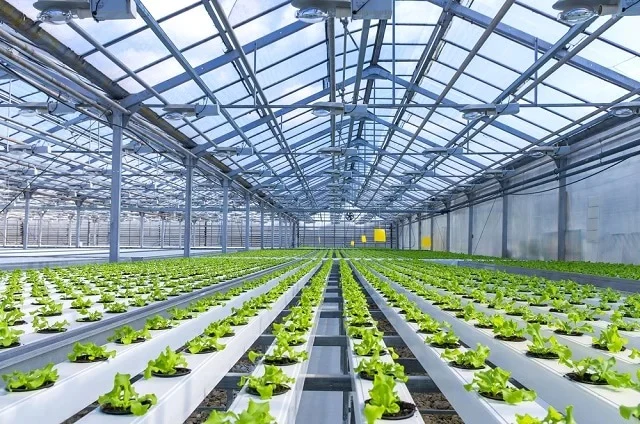
Vertical farming, coupled with hydroponics, is an innovative solution that holds great potential for the future of agriculture. By cultivating crops in vertically stacked layers, it allows for maximum use of limited space, making it especially suitable for urban areas where land is scarce. With a vertical farming system, plants are grown in a controlled environment, where temperature, lighting, and nutrient levels can be carefully managed to optimize crop growth and productivity.
One of the key advantages of vertical farming with hydroponics is its ability to produce high yields of crops throughout the year, regardless of the season. Traditional farming is heavily dependent on weather conditions, which can often lead to fluctuations in harvests. However, with vertical farming, crops can be grown in a controlled environment where variables such as temperature, humidity, and lighting are optimized to mimic ideal conditions for plant growth. This results in consistent and predictable harvests, ensuring a reliable food supply regardless of external factors. Not only does this provide a solution for food security, but it also contributes to self-sufficiency and reduces the reliance on imported produce.
• Vertical farming with hydroponics maximizes the use of limited space, making it ideal for urban areas where land is scarce.
• Controlled environments in vertical farms allow for precise management of temperature, lighting, and nutrient levels to optimize crop growth.
• Vertical farming ensures consistent and predictable harvests throughout the year, regardless of seasonal fluctuations.
• By mimicking ideal conditions for plant growth, vertical farming reduces reliance on weather conditions and provides a reliable food supply.
• Vertical farming contributes to self-sufficiency and reduces dependence on imported produce.
Hydroponics: A Solution for Urban Farming
Urban farming is a growing trend in cities around the world, as it offers a solution to the limited availability of land for traditional agriculture. With its ability to grow plants vertically and in controlled environments, hydroponics is quickly becoming a popular choice for urban farmers. Hydroponics farming involves growing plants without soil, using nutrient-rich water solutions instead. This method not only maximizes crop yield but also conserves water and eliminates the need for pesticides.
One of the main advantages of hydroponics for urban farming is its ability to overcome limited land resources. In densely populated areas, finding large plots of land for traditional farming can be a challenge. With hydroponics, plants can be grown vertically, utilizing available space more efficiently. By utilizing vertical farming techniques, hydroponic systems can produce a higher yield per square foot compared to traditional soil-based farming methods. This makes hydroponics an ideal choice for urban farmers looking to make the most of their limited growing space.
• Hydroponics allows for vertical farming, utilizing available space more efficiently
• Hydroponic systems can produce a higher yield per square foot compared to traditional soil-based farming methods
• Ideal choice for urban farmers looking to make the most of their limited growing space
Addressing Food Security and Self-Sufficiency
Food security and self-sufficiency are crucial issues that need to be addressed in order to support a growing global population. Traditional agriculture, with its reliance on soil and large land areas, faces challenges in meeting this demand. However, hydroponics farming offers a promising solution.
Hydroponics provides a method of cultivating crops without the need for soil, maximizing space utilization and increasing crop yields. By growing plants in nutrient-rich water solutions, hydroponics systems can produce significantly more food compared to traditional farming methods. This is especially important in areas with limited arable land, where hydroponics can help bridge the gap between food supply and demand.
Furthermore, hydroponics farming can play a crucial role in ensuring food security by reducing the reliance on external sources for food. With the ability to grow crops in controlled environments, hydroponics allows for year-round production and eliminates the dependence on seasonal variations and weather conditions. This contributes to a more stable food supply, reducing the vulnerability to factors such as droughts, floods, or pests.
In conclusion, addressing food security and self-sufficiency requires innovative solutions, and hydroponics farming holds great potential. By maximizing crop yield, minimizing land requirements, and providing a stable food supply, hydroponics offers a sustainable and efficient way to meet the growing demand for food. Through the adoption of hydroponics systems, individuals, communities, and countries can take significant steps towards achieving food security and self-sufficiency.
• Hydroponics farming offers a solution to address food security and self-sufficiency challenges.
• Hydroponics maximizes space utilization and increases crop yields by growing plants in nutrient-rich water solutions.
• This method is especially beneficial in areas with limited arable land, helping bridge the gap between food supply and demand.
• Hydroponics reduces reliance on external sources for food by allowing year-round production in controlled environments.
• It eliminates dependence on seasonal variations and weather conditions, contributing to a more stable food supply.
• By adopting hydroponics systems, individuals, communities, and countries can take significant steps towards achieving food security and self-sufficiency.
Hydroponics and the Future of Agriculture
The future of agriculture lies in the hands of hydroponics, a revolutionary farming technique that is set to reshape the way we grow crops. With the world population steadily increasing, traditional farming practices are struggling to keep up with the rising demand for food. This is where hydroponics steps in, offering a sustainable and efficient solution to address this global challenge.
One of the key advantages of hydroponics is its ability to maximize crop yield, even in limited land resources. By eliminating the need for soil, hydroponic systems can be set up in any location, making it ideal for urban areas and regions with limited arable land. This opens up new possibilities for urban farming, where abandoned buildings and rooftops can be transformed into productive food-growing spaces. Hydroponics also allows vertical farming, where crops can be stacked on top of each other, optimizing land usage and increasing productivity. The future of agriculture is indeed promising with the implementation of hydroponics.
• Hydroponics offers a sustainable solution to address the increasing demand for food due to the rising world population.
• Traditional farming practices are struggling to keep up with this demand, making hydroponics a revolutionary technique in agriculture.
• Hydroponic systems can be set up in any location, eliminating the need for soil and maximizing crop yield.
• This makes it ideal for urban areas and regions with limited arable land, opening up new possibilities for urban farming.
• Abandoned buildings and rooftops can be transformed into productive food-growing spaces through hydroponics.
• Vertical farming is also possible with hydroponics, allowing crops to be stacked on top of each other and optimizing land usage.
Essential Equipment for Hydroponics Farming
Essential Equipment for Hydroponics Farming
Setting up a successful hydroponics farm requires specific equipment designed to optimize plant growth and maximize crop yield. Here are some essential tools and materials that every hydroponics enthusiast should consider:
1. Grow Lights: Since hydroponics farming does not rely on natural sunlight, the use of artificial grow lights is crucial for plant photosynthesis. High-intensity LED or fluorescent lights are popular choices, providing the necessary light spectrum for optimal growth while reducing energy consumption.
2. Nutrient Solution Delivery System: Hydroponic plants rely on a nutrient-rich solution instead of soil for their growth. To ensure an efficient delivery of this solution, a proper irrigation system is essential. This includes pumps, pipes, timers, and emitters to precisely control water and nutrient distribution to the plants.
3. Growing Medium: Different types of growing media can be used in hydroponics, such as coconut coir, perlite, or rockwool. These provide stability, support, and root aeration, allowing plants to absorb nutrients effectively.
4. pH and EC Meters: Monitoring the pH and electrical conductivity (EC) levels of the nutrient solution is crucial in hydroponics farming. These meters help to ensure the ideal conditions for nutrient uptake and plant health.
5. Climate Control Systems: Maintaining the right temperature, humidity, and ventilation in a hydroponics system is vital for plant growth and disease prevention. Climate control equipment, including fans, heaters, dehumidifiers, and air conditioning, help create optimal growing conditions.
Investing in the proper equipment necessary for hydroponics farming is essential for achieving successful results. These tools provide optimal growing conditions and enable enthusiasts to maintain precise control over key variables like light, nutrients, and climate to maximize plant health and yield.
• Grow Lights: High-intensity LED or fluorescent lights are popular choices for providing the necessary light spectrum for optimal growth while reducing energy consumption.
• Nutrient Solution Delivery System: This includes pumps, pipes, timers, and emitters to precisely control water and nutrient distribution to the plants.
• Growing Medium: Different types of growing media such as coconut coir, perlite, or rockwool provide stability, support, and root aeration for effective nutrient absorption.
• pH and EC Meters: These meters help monitor the pH and electrical conductivity levels of the nutrient solution to ensure ideal conditions for nutrient uptake and plant health.
• Climate Control Systems: Fans, heaters, dehumidifiers, and air conditioning equipment help maintain the right temperature, humidity, and ventilation in a hydroponics system for optimal plant growth.
Investing in these essential pieces of equipment is crucial for achieving successful results in hydroponics farming. They provide enthusiasts with precise control over key variables like light intensity,
nutrients delivery,
and climate conditions that directly impact plant health
and crop yield.
Choosing the Right Hydroponic System for Your Needs
When it comes to choosing the right hydroponic system for your needs, there are several factors to consider. First and foremost, it is important to assess your available space. Different hydroponic systems have varying space requirements, so it is essential to select a system that fits your available area. For smaller spaces, options such as nutrient film technique (NFT) or deep water culture (DWC) systems can be ideal, as they are compact and require minimal space. On the other hand, larger spaces can accommodate more extensive systems like nutrient flow technique (NFT) or aeroponics.
Another crucial consideration is the type of plants you want to grow. Different hydroponic systems are better suited for specific plant varieties. For example, nutrient film technique (NFT) systems are perfect for leafy greens and herbs due to their shallow nutrient film, while deep water culture (DWC) systems work well for larger plants like tomatoes or cucumbers. Understanding the specific requirements and characteristics of the plants you intend to grow will help you select the most suitable hydroponic system.
In addition to space and plant type, other factors to consider when choosing a hydroponic system include initial setup costs, operating expenses, maintenance requirements, and desired level of automation. Each system has its own advantages and considerations, so it is crucial to evaluate these aspects before making your decision. By taking these factors into account, you can find the right hydroponic system that aligns with your needs, resources, and goals.
• Assess your available space: Different hydroponic systems have varying space requirements, so choose a system that fits your available area.
• Consider the type of plants you want to grow: Certain systems are better suited for specific plant varieties, so understand the requirements and characteristics of your chosen plants.
• Evaluate initial setup costs and operating expenses: Some systems may require more upfront investment or ongoing expenses, so consider your budget before making a decision.
• Take maintenance requirements into account: Different systems may have different maintenance needs, such as monitoring nutrient levels or cleaning equipment. Consider how much time and effort you can dedicate to maintaining the system.
• Determine desired level of automation: Some hydroponic systems offer more automated features, such as timers or sensors. Decide whether you prefer a hands-on approach or if automation is important to you.
• Align with your needs, resources, and goals: By considering all these factors, you can find a hydroponic system that meets your specific needs and aligns with your available resources and goals.
Steps to Start Your Own Hydroponics Farm
Starting your own hydroponics farm may seem daunting, but with the right steps and preparation, it can be a fulfilling and rewarding endeavor. Here are two essential steps to get you started on your path to successful hydroponics farming.
1. Research and Planning: Before diving into hydroponics farming, it is crucial to acquire a solid understanding of the principles and techniques involved. Begin by researching different hydroponic systems and determining which one suits your space, resources, and goals. Consider factors such as the size of your farm, available budget, and the types of crops you wish to grow. Additionally, study the nutritional requirements and growth patterns of the specific plants you plan to cultivate. This knowledge will help you create an efficient and tailored hydroponic setup to maximize crop yield.
2. Set up the Hydroponic System: Once you have gathered sufficient knowledge, it’s time to set up your hydroponic system. Begin by selecting a suitable location for your farm. Depending on your circumstances, you may opt for a spare room, a basement, a greenhouse, or even a dedicated outdoor space. Ensure the chosen area has adequate access to natural light or consider investing in artificial lighting systems like LED grow lights. Next, assemble the necessary equipment, including containers or trays for nutrient solution, growing media, pumps, timers, and pH meters. Follow the instructions provided by the manufacturer and carefully calibrate and adjust the system to maintain optimal water and nutrient circulation. Remember to monitor and fine-tune the system regularly for optimal plant growth and health.
With these initial steps, you will be well on your way to establishing your own hydroponics farm. In the next sections, we will explore additional aspects, such as nutrient management, crop selection, and troubleshooting common challenges. So, stay tuned for more valuable insights and tips to ensure your hydroponics farming journey is a successful one.
• Research different hydroponic systems and determine which one suits your space, resources, and goals
• Consider factors such as the size of your farm, available budget, and the types of crops you wish to grow
• Study the nutritional requirements and growth patterns of the specific plants you plan to cultivate
• Create an efficient and tailored hydroponic setup to maximize crop yield
• Select a suitable location for your farm, such as a spare room, basement, greenhouse or dedicated outdoor space
• Ensure the chosen area has adequate access to natural light or invest in artificial lighting systems like LED grow lights
• Assemble necessary equipment including containers/trays for nutrient solution, growing media, pumps, timers, pH meters
• Follow manufacturer instructions to calibrate and adjust system for optimal water and nutrient circulation
• Regularly monitor and fine-tune system for optimal plant growth
With these initial steps completed successfully:
– You will be well on your way to establishing your own hydroponics farm.
– Stay tuned for more valuable insights on nutrient management,crop selection,and troubleshooting common challenges.
Certainly! Here’s a table with information about hydroponic farming:
| Aspect | Description |
|---|---|
| System Types | – Deep Water Culture (DWC): Plants suspended in nutrient-rich water. – Nutrient Film Technique (NFT): Thin film of nutrient solution flowing over plant roots. – Drip Systems: Nutrient solution is dripped onto the base of plants. – Aeroponics: Roots are misted with nutrient solution. |
| Growing Medium | Often soilless, using materials like perlite, vermiculite, coco coir, or Rockwool. |
| Nutrient Solution | Customized nutrient mixtures providing essential elements for plant growth. |
| Water Conservation | Hydroponic systems typically use less water than traditional soil farming. |
| Space Efficiency | Maximizes space utilization, suitable for urban or limited-space agriculture. |
| Control over Environment | Enables precise control over factors like temperature, humidity, and light. |
| Automation Potential | Many hydroponic systems can be automated for nutrient delivery and environmental control. |
| Crops Suitable | Virtually any crop can be grown hydroponically, including vegetables, herbs, fruits, and flowers. |
| Growth Rates | Plants often grow faster in hydroponic systems due to optimized nutrient availability. |
| Resource Efficiency | Efficient nutrient use, reduced water consumption, and minimized reliance on pesticides. |
| Challenges | – Initial setup costs can be high. – Requires technical knowledge for optimal system management. – System failures can have rapid and severe consequences. |
| Training and Knowledge | Hydroponic farming may require training and understanding of system dynamics, nutrient management, and troubleshooting. |
| Community and Commercial Applications | Used in both small-scale community projects and large-scale commercial farms. |
| Sustainability | When properly managed, hydroponic farming can be a sustainable and resource-efficient agriculture method. |
| Learning Resources | Various courses, guides, and online resources are available for learning hydroponic farming techniques. |
Hydroponic farming offers numerous advantages, including precise control over growing conditions, reduced environmental impact, and the ability to grow crops in locations with limited arable land. However, it also presents challenges that require careful management and expertise.
Success Stories and Inspiring Case Studies in Hydroponics
Hydroponics farming has revolutionized the way we grow crops, offering numerous advantages over traditional soil-based farming methods. By eliminating the need for soil, hydroponics allows for vertical farming, making it possible to grow crops in limited spaces and urban areas. One inspiring success story in hydroponics is Gotham Greens, a company that operates rooftop greenhouses in various cities across the United States. By using hydroponic systems, they are able to grow fresh produce year-round, regardless of weather conditions, significantly reducing the carbon footprint associated with transportation and storage. This innovative approach not only provides local communities with fresh, nutritious food but also promotes sustainability by conserving energy and minimizing waste.
Another remarkable case study is AeroFarms, an indoor vertical farming company that utilizes aeroponics, a form of hydroponics, to grow leafy greens and herbs in a controlled environment. Through precise nutrient and water management, AeroFarms is able to achieve crop yields 390 times higher compared to traditional field farming. By optimizing growing conditions such as light, temperature, and humidity, they are able to grow crops faster and without the use of pesticides. This not only ensures food safety but also reduces the environmental impact of agriculture by eliminating the need for harmful chemicals. Additionally, AeroFarms’ farming system uses 95% less water than traditional field farming, further emphasizing the resource efficiency of hydroponics.
These success stories highlight the immense potential of hydroponics in addressing the challenges faced by conventional agriculture. Through advanced technologies and innovative farming practices, hydroponics offers a sustainable and efficient solution for producing high-quality, nutrient-rich crops while minimizing the negative impacts on the environment. As we delve deeper into the world of hydroponics, it is clear that this method has the power to transform our food system and pave the way for a more secure and sustainable future.
• Gotham Greens operates rooftop greenhouses in various cities across the United States, using hydroponic systems to grow fresh produce year-round.
• Hydroponics eliminates the need for soil, allowing for vertical farming and making it possible to grow crops in limited spaces and urban areas.
• By utilizing hydroponics, Gotham Greens significantly reduces the carbon footprint associated with transportation and storage of produce.
• AeroFarms is an indoor vertical farming company that utilizes aeroponics, a form of hydroponics, to achieve crop yields 390 times higher compared to traditional field farming.
• AeroFarms’ precise nutrient and water management allows them to grow crops faster without the use of pesticides, ensuring food safety and reducing environmental impact.
• AeroFarms’ farming system uses 95% less water than traditional field farming, highlighting the resource efficiency of hydroponics.
• Hydroponics offers a sustainable and efficient solution for producing high-quality, nutrient-rich crops while minimizing negative impacts on the environment.
What are some examples of success stories in hydroponics farming?
One success story in hydroponics farming is the rooftop garden in New York City, where a company successfully grows a variety of vegetables and herbs using hydroponic systems. Another success story is the vertical farm in Singapore, which produces a significant amount of fresh produce in a limited space using hydroponics.
How does hydroponics farming contribute to addressing limited land resources?
Hydroponics farming allows plants to be grown without soil, making it possible to cultivate crops in areas with limited land resources. By utilizing vertical farming techniques, hydroponics systems can maximize the use of vertical space, significantly increasing the production capacity compared to traditional farming methods.
What are the advantages of hydroponics farming in terms of water conservation?
Hydroponics farming uses a recirculating system that conserves water by reusing it. Unlike traditional soil-based agriculture, hydroponics systems require only a fraction of the water needed for irrigation. This efficient water usage contributes to water conservation and sustainability.
How does hydroponics farming eliminate the need for pesticides?
In hydroponics farming, pests and diseases are minimized due to the controlled environment and absence of soil. By eliminating soil as a medium for pests and diseases to thrive, hydroponics systems reduce or eliminate the need for pesticides. This has the added benefit of producing cleaner, pesticide-free crops.
How does hydroponics farming help in minimizing soil erosion and degradation?
Hydroponics farming eliminates the need for soil, therefore eliminating the risk of soil erosion and degradation. By growing plants in a soilless medium, such as water or inert materials like perlite or coconut coir, hydroponics systems protect the soil from erosion and maintain its fertility for future use.
How does hydroponics enhance nutrient management compared to traditional farming?
In hydroponics farming, nutrients are delivered directly to the plants’ roots in a controlled manner. This allows for precise nutrient management, ensuring that plants receive the exact amount of nutrients they need. Unlike traditional farming, where nutrients are dispersed in the soil and can be lost through leaching or runoff, hydroponics systems optimize nutrient absorption and minimize waste.
How does hydroponics farming contribute to reducing energy consumption in agriculture?
Hydroponics farming can be more energy-efficient compared to traditional farming methods. By utilizing artificial lighting, temperature control, and optimized water circulation systems, hydroponics systems can reduce energy consumption associated with maintaining ideal growing conditions. This results in more sustainable and cost-effective farming practices.
What is vertical farming, and how does hydroponics play a role in it?
Vertical farming is a method of growing crops in vertically stacked layers, often in a controlled environment. Hydroponics plays a crucial role in vertical farming as it allows for the cultivation of plants without soil, maximizing space utilization. By combining hydroponics with vertical farming techniques, farmers can grow a significant amount of food in urban areas with limited land availability.
How does hydroponics contribute to urban farming and addressing food security?
Hydroponics is a viable solution for urban farming as it enables food production in limited urban spaces. By implementing hydroponics systems in urban areas, communities can have access to fresh, locally grown produce, reducing the reliance on long-distance transportation and improving food security. Hydroponics also allows year-round cultivation, providing a consistent food supply regardless of seasonal limitations.
What is the future of hydroponics in the field of agriculture?
The future of hydroponics in agriculture is promising. As the demand for sustainable and efficient farming practices continues to grow, hydroponics offers a solution that maximizes crop yield, conserves resources, and reduces environmental impact. With advancements in technology and increased awareness of its benefits, hydroponics is likely to play a significant role in shaping the future of agriculture.
What are some essential equipment needed for hydroponics farming?
Some essential equipment for hydroponics farming includes a nutrient reservoir, grow lights, pH and EC meters, pumps for water circulation, air pumps for oxygenation, and a growing medium such as coconut coir or perlite. Additionally, depending on the type of hydroponic system chosen, equipment such as nutrient injectors, timers, and pH controllers may be required.
How can one start their own hydroponics farm?
To start your hydroponics farm, you can begin by conducting research on different hydroponic systems and choosing the one that best suits your needs. Next, acquire the necessary equipment and set up a suitable growing space, ensuring proper lighting, temperature, and ventilation. Select the crops you wish to grow and obtain the necessary seeds or seedlings. Finally, establish a nutrient management plan, monitor plant health, and maintain the hydroponics system to ensure optimal growth and yield.


